-- From Devonport to Strahan
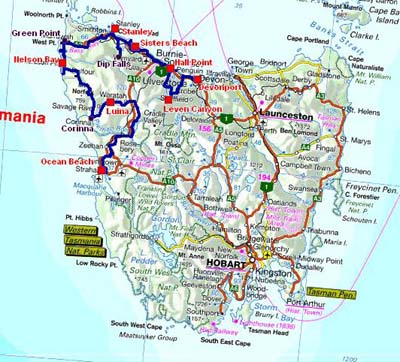
The road tracklog
from Devonport to Strahan
from 22/03/2010 to 28/03/2010
Tasmania
Tasmania is located at 300 km in the south of Australia between the 40 and the 44 parallel south. Australians call it either Tassie or Apple Isle, due to its apple shape. It has a surface of 68,332 km² with a population of approximately 500,000 inhabitants of which 40% live in Hobart. 27% of its surface are dedicated to agriculture, cereals, fodder and wines. The occupation of the Island is attested since more than 35,000 years ago by Aboriginals. Dutch was the first Europeans to walk on the ground of the Island in 1642. The first English settlement was established in Hobart in 1804.
On Monday March 22, was the day of publication of my website. I went to the Library which did not have a wireless access. With full knowledge of the facts I had prepared the DOS script to publish it. During my stay the research of cybercafés will be true chore. On Spirit-of-Tasmania I had done a harvest of the booklets concerning Tasmania and I had bought a entry permit into National Parks for two months, I remained six weeks there. During the voyage I had studied them by reading again the report wrote by Evelyne of their trip in February/March 2007. I left Devonport around 11.30am under a covered sky and a temperature of 24°C to head to Leven Canyon at 508 meters high where after lunching I went for a walk suggested by the park. I bivouacked on the site.
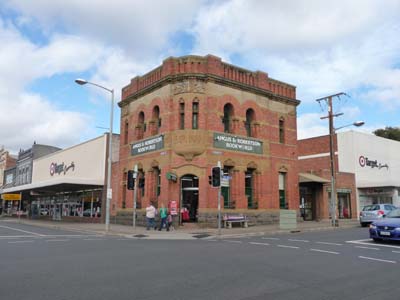
Old building
Devonport
22/03/2010
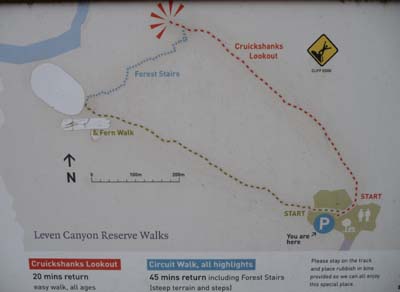
Leven Canyon
22/03/2010
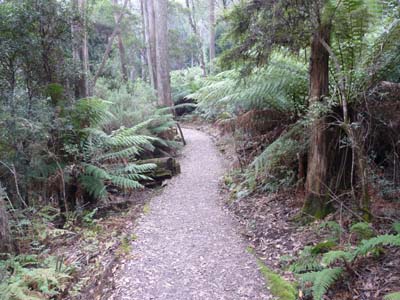
Walking track
Leven canyon
22/03/2010
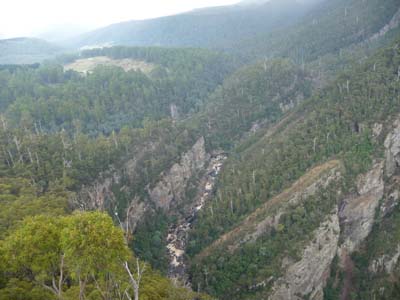
Leven Canyon
22/03/2010
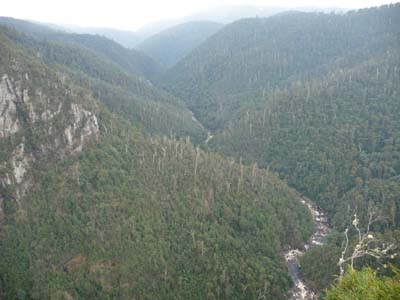
Leven Canyon
22/03/2010
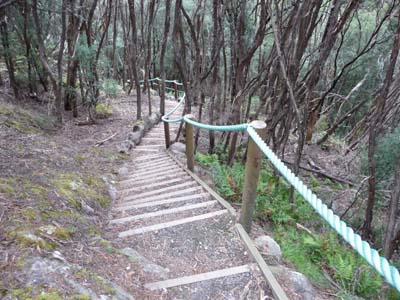
Return track
Leven Canyon
22/03/2010
The next day I left the solitary bivouac at Leven Canyon to return on the coast by a road which twisted in roller coaster in a landscape of medium mountains like to the French Jura, meadow and breeding. On the move I did a stop at Wing's Wildlife Park to try and see wild species. I was not rewarded because obviously the night species, opossum and others, were invisible. At the village of Penguin I took a picture of a giant Penguin in majesty on the town square. I bivouacked on seashore at the entry of Sulfur Creek.
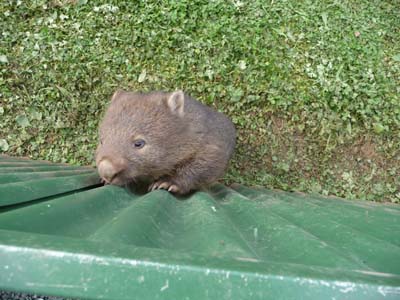
Wombat
Wing's Wildlife Park
23/03/2010
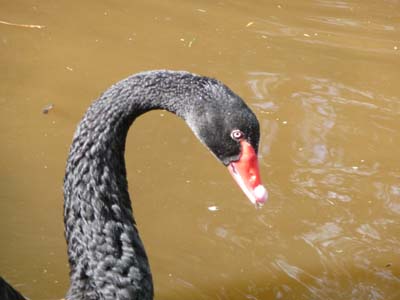
Black Swan
Wing's Wildlife Park
23/03/2010
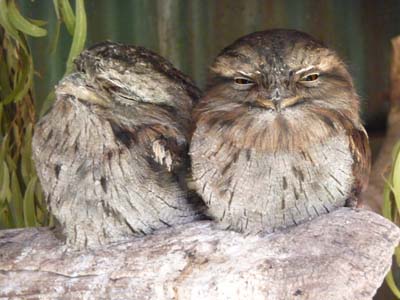
Tawny Frogmouth
Wing's Wildlife Park
23/03/2010

Penguin
23/03/2010
In this March 24th, two geological sights close to Wynyard held my attention. Fossil Bluff, where the oldest fossil of a 20 million years ago marsupial was found. Table Cape, which offers an unforgettable panorama on the sea with a Lighthouse built in 1888. On the coast the sun made a shy reappearance, the temperature remained pleasant, in the day 24°C and in the night 14°C. I bivouacked at Sisters Beach in Rocky Cape NP. In the late afternoon I strolled on the immense fine sand beach that disturbed only with wave noise and the seagull cry in a silence (!) favourable with the introspective meditation.
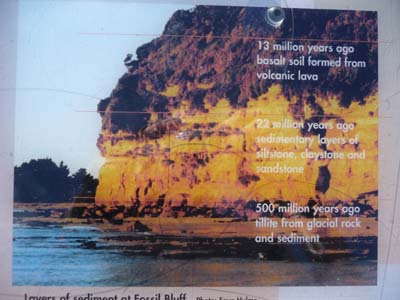
Fossil Bluff
Wynyard
24/03/2010

Fossil Bluff
Wynyard
24/03/2010
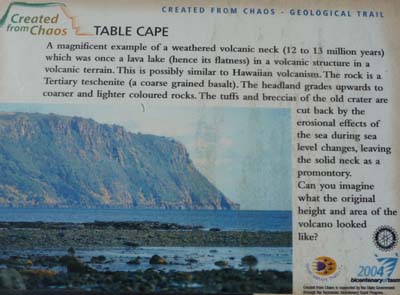
Table Cape
Wynyard
24/03/2010
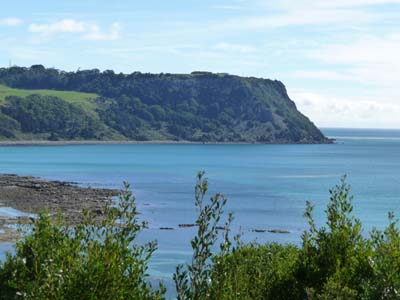
Table Cape
Wynyard
24/03/2010
In edge of sea weather was very changing, the following day was a cloudy day without rain. At Rocky Cape in the absence of sun colour of the rocks was dull.

Rocky Cape
Rocky Cape NP
25/03/2010
I did a detour to visit Dip Falls and Big Trees beyond Mawbanna where I bought Manuka honey from Tea Trees having anti-bacterial properties. Dip Falls precipitate on hexagonal basalt columns like the Giant's Causeway in North Ireland. Both Big Trees old of approximately 400 years are Eucalyptus Obliqua whose circumference around the base is approximately 16 meters for a 62 meters high.
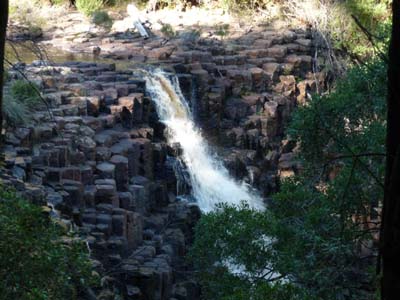
Dip Falls
Mawbanna
25/03/2010
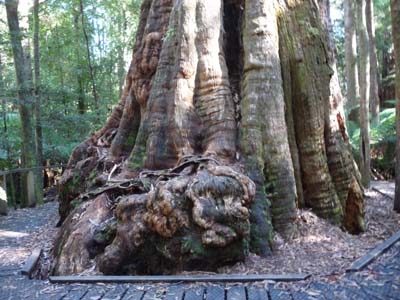
Big tree
Mawbanna
25/03/2010
Stanley is famous by its volcanic Table, The Nut, 152 meters high, see the Gallery of Pictures. After having lunch at Hursey's Seafood of a local speciality I sauntered in the old town in a cold drizzle before going to bivouac at Stanley Cabin & Tourist Park where oh happiness a manager offered me half an hour of Internet connection, but not more! I was satisfied some to read my mailbox.
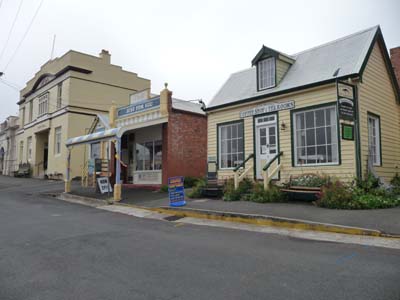
Old houses
Stanley
25/03/2010
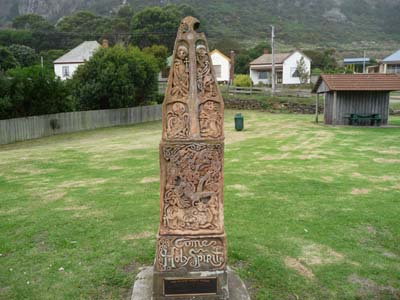
Holy Spirit
Stanley
25/03/2010
Around fifty years ago my parents gave me a 2CV.
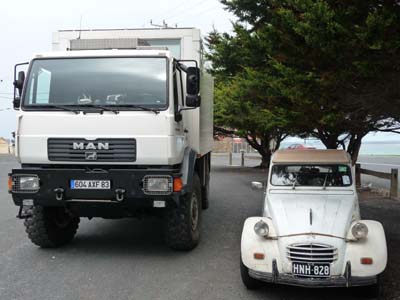
Surprising meeting
Stanley
25/03/2010
I left Stanley in the rain. On the move I visited Smithton without stop then I headed towards the town of Marrawah to have lunch at Green Point of which rocks are covered with a reddish lichen partially. Always in the rain I visited the other points of this rugged coast West Point then Bluff Hill.
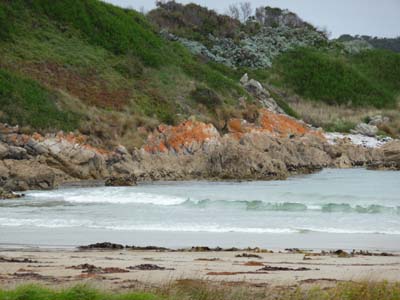
Green Point
En route
26/03/2010
Just after the one lane bridge in Arthur River at Gardiner Point the coast is called The Edge of the World. In Arthur River I bought a camp permit to bivouac at Nelson Bay where around 5pm sunbeams made their appearance timidly. On this wild coast I was the only “survivor” among fishermen's houses.

The bridget
Arthur River
26/03/2010
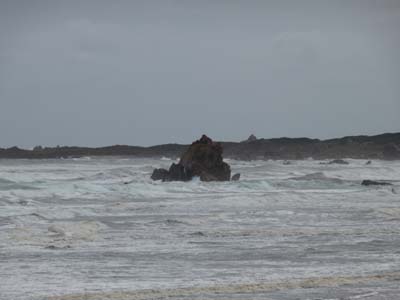
The Edge of the World
Arthur River
26/03/2010
The day after I continued to coast on the wild coast in the search of sumptuous landscapes. After The Edge off the World, Couta Rocks held my attention, the rocks beaten by the undertow of the sea were sublimes in scanty light of a covered morning. I pushed to Richardson a charming fishermen town.
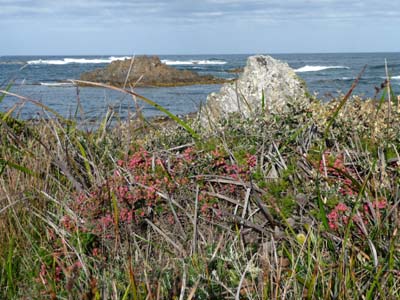
Wild coast
Couta Rocks
27/03/2010
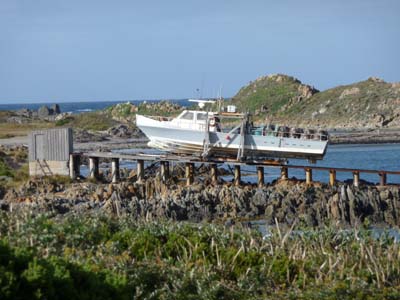
The port
Couta Rocks
27/03/2010
I drove back to Couta Rocks to take the track to Corinna which after the junction with C249 twisted in roller coasters for 53 kilometres between mountains of which the Mt Balfour and the Mt Frankland.
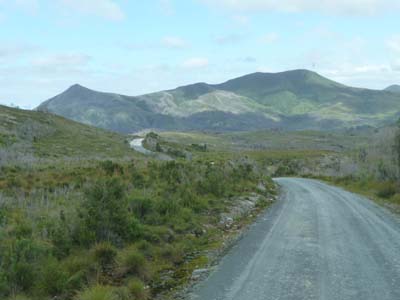
En route
to Corinna
27/03/2010
I arrived around 1 p.m. at the edge of Pieman River to discover that the ferry was a small one whose capacity was limited up to 6,3 tons. Consequently I was to make a detour by Waratah then by Murchison Hwy to reach Strahan my goal of the week.

The vat & et its driver
Corinna
27/03/2010
The morning of Sunday occurred in the mountain to visit old mining cities in
altitude and in coldness. They did not become Ghost Towns, but little without
is necessary, they were saved by tourism. Their population is evaluated to a few
hundreds of souls.
Waratah was created little before 1871 dates to which James “Philosopher”
Smith discovered tin at the foot of the Mt Bischoff. At the centre of the
village a water fall was used as driving force, some paddle mills remain
around. The star attraction is "Stamper Mill" which was encapsulated in a
modern building to preserve its memory.
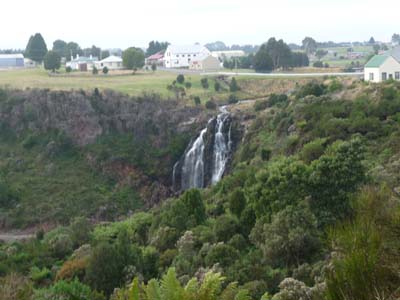
Waterfalls
Waratah
28/03/2010
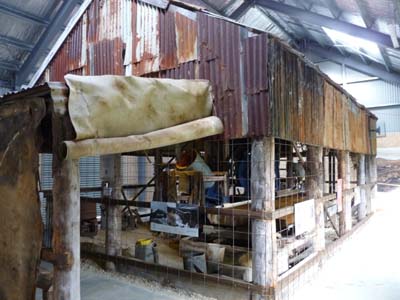
Stamper Mill
Waratah
28/03/2010
Tullah is located at the foot of the Mt Farrell close to the Lake Rosebery. It was a mining city since 1892 at the time of discovered silver lead ore. Tarvern, Café, Bar and Museum tell splendour and labour of miners with photographs of the era. At 10 a.m. I had a collation there of a hot coffee and very hot scones.
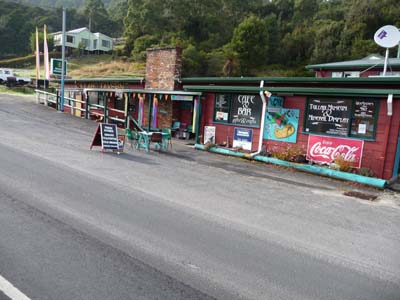
Tavern, Museum
Tullah
28/03/2010
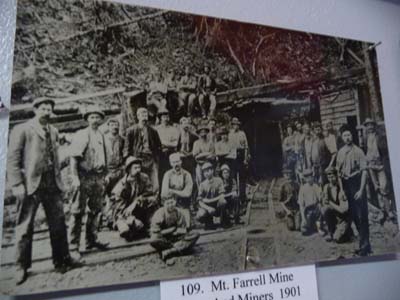
Mt Farrell Mine
Tullah
28/03/2010
Zeehan was named “the Silver City” after the discovery of the sliverlead ore. It counted up to 25,000 inhabitants today a few hundreds. In addition to the museum the main street always shelters the theatre of the Gaiety built in 1899 where performances were represented in a room containing 1,000 spectators.
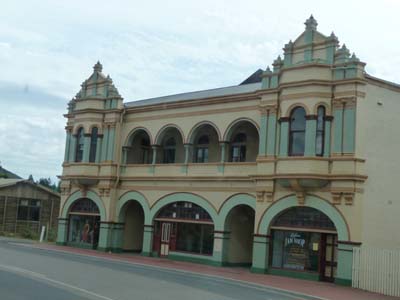
Gaiety Theatre
Zeehan
28/03/2010
In the early afternoon I arrived in Strahan where I went at once to Visitor Centre to learn that Online Centre was open neither on Sunday nor on Monday. A General Store & Café had a Internet connection and possibly with WiFi to confirm on Monday morning for the publication of my website. Then I was driving to establish my camping at Ocean Beach in an icy drizzle.